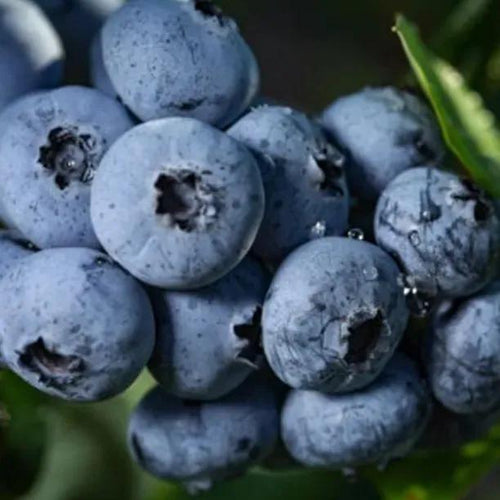Liberty Blueberry Plants
A prolific little fruiter, Liberty will produce consistently high yields of medium-large berries throughout August and September. The berries are juicy and a pretty pale-blue, with an attractive silver bloom. They're perfect for either eating straight off the bush, warm from summer sun, or freezing and eating later. Packed with antioxidants and vitamin C, they're linked with a heap of beneficial health claims and hard to beat for a healthy snack, or to pimp up cakes, muffins and smoothies. What's more, in winter, a handful, gently heated and spooned over a bowl of porridge, is a great reminder of those long summer days, so we'd go as far as to say they're great for your mental health too. The bush itself is upright and healthy, to around 1.5m, with deciduous leaves. For more blueberry varieties, take a look here.
Features
- Size: 1.5m
- Fruit: large, purple
- Taste: sweet
- Use: cooking/eating fresh
- Picking: Aug-Sep
- Freezes well
- Self-fertile
- Spacing 1.5m
Growing Liberty Blueberries
Like all blueberries, Liberty needs acid soil or a pot filled with ericaceous compost to grow well. So it's probably easier to grow blueberries in a pot if yours is about pH 5.5. Make sure the soil moist and free draining, too. In terms of aftercare, net your plants as the fruits develop and ripen, or the birds will have them all. If you're growing in pots, water using rainwater, not tap, or this can affect the pH of the soil.
This blueberry variety is partially self fertile, although planting more than one bush will increase the berries your plants produce, so buy a couple and plant in pots, or 1.5m apart.
Harvest – from August to September – by pulling gently on the berries; when they're ripe they'll come away easily from the plant.
Take a look at our
Guide to Growing Blueberry Plants.
Garden Design Ideas
Blueberries, even self-fertile ones, fruit best when pollinated by other blueberry varieties, so growing at least three types in one location is recommended.
History & Trivia
Originally from North America, blueberries were known as 'star berries' by Native Americans. Take a look at the end of a blueberry and you'll see why.

 Secure, One-Tap Checkout
Secure, One-Tap Checkout
 Hand Picked, Delivered to Your Door!
Hand Picked, Delivered to Your Door! 1 Year Bareroot Guarantee
1 Year Bareroot Guarantee


